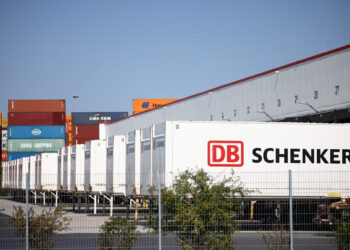Compare and contrast: March 2012 vs. itself
No one will argue that the first three months of 2012 was a golden time for airfreight. On a year-over-year basis, air freight, whether measured in tonnes or FTKs was down. But in March we began hearing about a sudden increase in demand, fueled by large shipments of the latest incarnation of Apple’s iPhone. Anecdotal reports indicated a big spike in rates as shippers battled for space on flights out of Asia. When IATA published its March cargo summary there was no huge jump, but both international and domestic cargo traffic were shown as being up slightly – 0.1 and 1.3%, respectively.
However, in contrast to the IATA report and the anecdotal evidence, when the big carriers published their March cargo statistics, good news was notably absent. Air France-KLM reported March cargo traffic down 3.4%. Lufthansa (which also faced the ongoing night flight ban at Frankfurt) said its March traffic was down 7.0%. Cathay reported a 6.7% drop. Singapore was down 1.9%.
Confusing, no? If the likes of AF-KL, Lufthansa, Cathay, and SIA were showing big declines, where was the gain? Sure, Turkish Airlines’ March cargo volume was up 26%, and LAN posted a 2.7% gain, but that doesn’t even begin to balance the drop at the big carriers. And it gets even stranger. Consider these excerpts from the first-quarter reports of two leading air freight players…
Atlas Air Worldwide Holdings operates the world’s largest 747 freighter fleet. It offers both commercial and military charter service on its own behalf, and operates on an ACMI basis for a variety of major carriers (and a forwarder) worldwide. In other words, it is something of a bellwether for the industry. In discussing the company’s strong first-quarter performance, CEO Bill Flynn said: “Earnings in the first quarter of 2012 were well above our expectations. The improvement was primarily due to a substantial pickup in the commercial airfreight market during March 2012. Volumes and rates improved dramatically compared with January and February, and we were well-positioned to help customers respond to an increase in demand for airfreight capacity, especially out of Asia, for new, high-tech product launches, pharmaceuticals, automotive parts and other high-value, time-sensitive-to-market shipments. After flying below minimums in January and February, the company’s ACMI customers flew approximately 11% above minimum block hours in March, reflecting the increase in demand and improvement in rates.”
Now, contrast Mr. Flynn’s words with those of Peter Rose, Chairman and CEO of Expeditors International. Expeditors isn’t the world’s biggest forwarder, but it is consistently the most profitable, and Peter Rose is one of the most astute people in the industry. He had this to say about the effect of the month of March on his company’s 16% decline in first quarter net income: “Historically, March is a very significant airfreight month from a tonnage perspective. March 2012 was a notable exception. It is also an anomaly when we experience both a strong reduction in year-over-year airfreight tonnage and a margin contraction. Those who understand the nuances of this business will recognize that as a sign of what it is, a very atypical airfreight environment.”
So, there you have it. March was a great month, and March totally stank. Take your pick.




